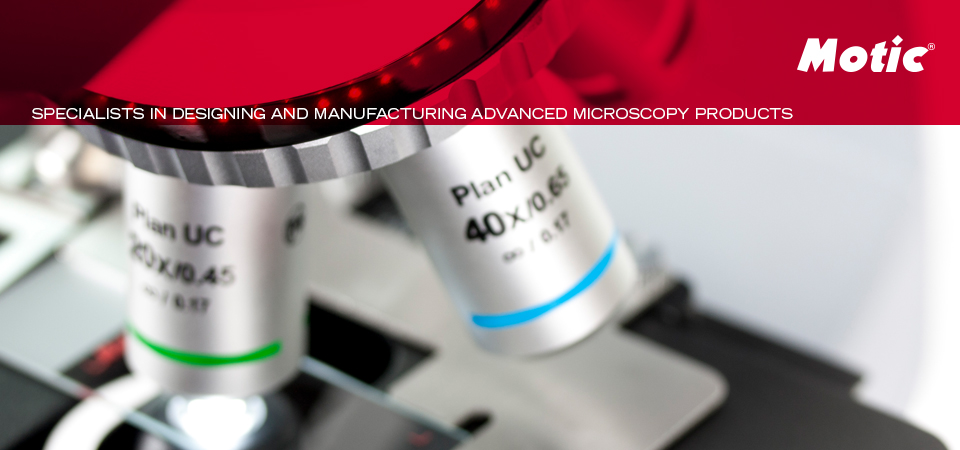An interesting variance of darkfield is Rheinberg
illumination, discovered in 1896 in London by Julius Rheinberg. The major
difference between darkfield and Rheinberg illumination is color. Whereas in
darkfield, the background is black and the subject is white, Rheinberg goes a
step further and creates a colored background and a colored subject.
Wednesday 29 June 2016
Monday 27 June 2016
MOTIC’s New Tablet Solutions: enabling computer-free digital microscopy
Tablets and handheld computer devices are common place in every corner of working life. In schools, clinics or industrial applications, data gets captured, processed and transmitted using Android, Windows or iOS tablet devices.
Bringing this technology and flexibility to proper use in microscopy, Motic’s new Moticam Tablet solutions enable the user to choose the perfect solution for their circumstances. Following on the footsteps of Motic’s recent products to enable computer-free digital microscopy, the Moticam BTU8 and BTU10 feature a fully
Bringing this technology and flexibility to proper use in microscopy, Motic’s new Moticam Tablet solutions enable the user to choose the perfect solution for their circumstances. Following on the footsteps of Motic’s recent products to enable computer-free digital microscopy, the Moticam BTU8 and BTU10 feature a fully
Monday 20 June 2016
The Dutch live with water
 |
| Micrasterias Rotata and Papillifera | Motic AE31E inverted Microscope | Moticam HD stack |
The Dutch have to live with water, because of their country lying below sea level for the greatest part. What does this have to do with microscopy?
Every year the Dutch are spending billions of euros in dikes, canals, rivers, bridges, locks, waste water purification, water quality monitoring, water research and innovation. Dutch water know how is being applied all over the world.
| Micrasterias Papillifera | Motic BA410E upright Microscope | Moticam 10 |
Tags:
AE31E,
BA410E,
desmids,
DUTCH,
hd,
inverted microscope,
LWD objective,
micrasterias papillifera,
micrasterias rotata,
microscope,
microscopy,
motic,
moticam,
phytoplankton
Thursday 2 June 2016
Steeling food?
Subscribe to:
Posts (Atom)



